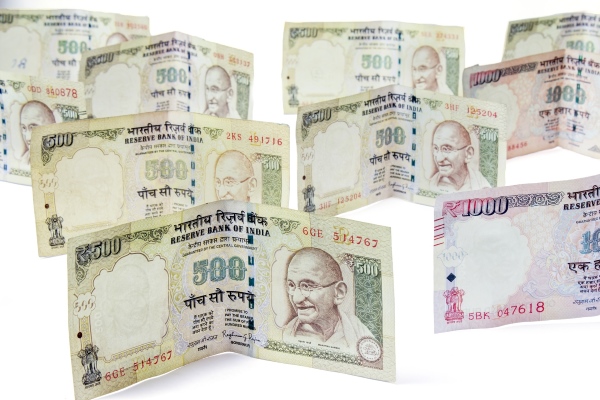
The Indian government has made the shock move to immediately scrap 1,000 and 500 rupee notes in a bid to eliminate corruption and counterfeit currency.
The move, where Prime Minister Narendra Modi described the ditched notes as "just worthless pieces of paper", came as a complete surprise to the country in early November and has caused turmoil as 86 per cent of the cash in circulation in India is represented by the discontinued banknotes.
The banknotes will be replaced by new 500 and 2,000 rupee notes, which will be fed into circulation over the next three to four weeks, while a new 1,000 rupee note will be introduced over the next few months. Meanwhile, new bank notes in lower denominations will also be issued with enhanced security features.
The high-value demonetised notes, worth between £5 and £12, can be deposited in bank accounts or exchanged for notes in lower denominations.
Branded as curing the disease of corruption and black money, Prime Minister Modi, who was elected in 2014 for his anti-corruption stance, called the move a "celebration of honesty".
"There is a need for a decisive war against the menace of corruption, black money and terrorism … [these] are festering wounds which make the country hollow from within," he said during a public address. "Black money and corruption are the biggest obstacles in eradicating poverty… These steps are part of our battle against corruption, black money and counterfeit notes."
India's economy is predominantly cash based with figures suggesting that 78 per cent of transactions in 2015 were made with cash, although there are also reports that transaction figures could be higher. The 1,000 and 500 rupee notes are very common and estimates suggest there were about 23 billion in circulation, which accounts for about 80 per cent of the value of cash in circulation in India.
Because of the large volumes, Indian banknotes have become rich pickings for currency counterfeiters. Last year, 64 per cent of counterfeits seized were for the 1,000 and 500 rupee notes, although official stats claim fake 1,000 rupee notes only made up 0.003 per cent of notes in circulation in the past three years, with a similar percentage for fake 500 rupee notes.
There is particular concern that terrorists use fake versions of the 500 rupee note to run operations. Meanwhile, fake notes have become harder to detect and some reports suggest that small cash-based businesses, such as petrol stations, were coming across counterfeit notes on a daily basis.
Money that is unaccounted for to avoid tax – black money – is also a huge problem in the country.
The government hoped the move will reduce tax evasion, corruption and counterfeiting, as well as help drive the country towards a cashless economy and more online banking. Already the number of mobile and electronic payments have surged, many media reports suggest.
The surprise discontinuation and restricted cash withdrawals at banks and ATMs has lead to large queues at banks and a shortage of lower denomination notes. Small businesses that rely on cash transactions are expected to feel the most impact from the move.
There have also been large protests and reports that 70 people have died while queuing, as well as reports of murder and suicide as a result of the imposed hardship. Markets have slowed and some analysts are forecasting a decline in GDP, but others believe this move will be good for the country's long-term growth.
The Indian government has previously clamped down on corruption and currency counterfeiting under similar means when, in 1978, it withdrew 1,000 rupee notes and discontinued 5,000 and 10,000 rupee notes for good.
©
SecuringIndustry.com





